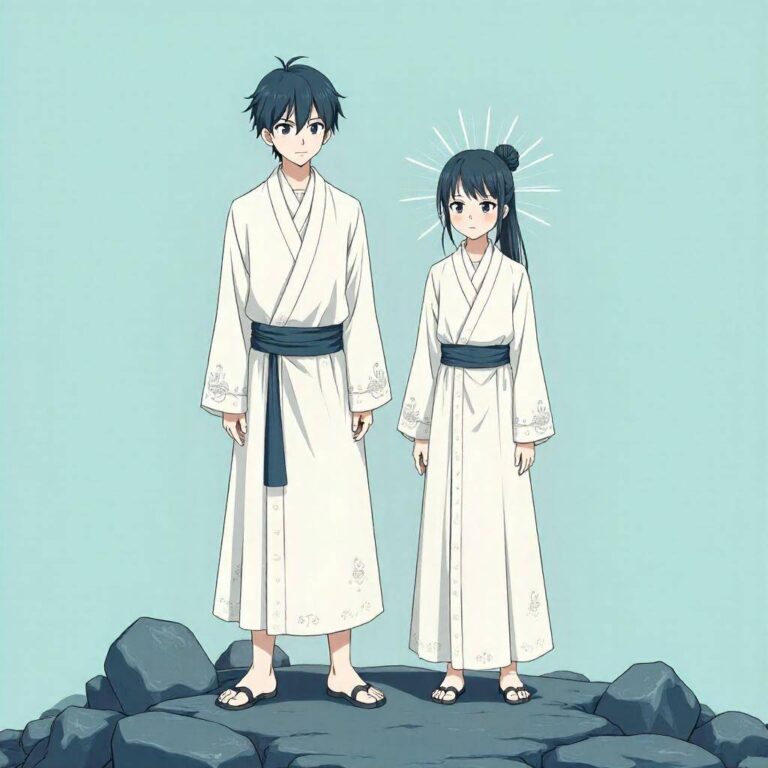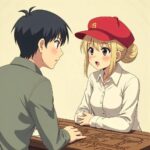Reader’s Question:
Why does Daioja only reveal its true identity after combining? If it had shown itself earlier when it was alone, it seems like some villains might have changed their ways and apologized sooner.
Why Does Daioja Only Reveal Its True Identity After Combining?
Alright, let’s dive into the fascinating world
of Daioja and its storytelling quirks! You’d think that when it comes to a hero revealing their true identity, it would be a no-brainer, right? Just come out swinging, say who you are, and maybe you’ll save a few villains from their dark paths. But no, Daioja holds back and only reveals its true self post-combination. So, what’s the deal with that?
First off, I can’t help but think about how much Daioja, the series, draws inspiration from classic Japanese storytelling tropes. It’s like a love letter to the iconic “Mito Komon,” where the protagonist, cloaked in mystery, teaches lessons through encounters rather than just handing out apologies and good intentions. It’s not just about revealing identity; it’s about the journey and the growth that comes from those little battles along the way.
Imagine if heroes just rolled up and started telling everyone who they are. “Hey there, I’m Daioja, the ultimate protector of justice!” That would take away the thrill! And let’s be real, where’s the drama in that? It’s like going to a stand-up comedy show and getting all the punchlines before the jokes are even told. You’d be sitting there thinking, “Okay, I know the endgame; what’s the point of me being here?”
The Fun of the Reveal
Now, one thing to appreciate about Daioja is how it builds tension. You’ve got to understand that these reveal moments are staged for maximum impact. When the hero finally transforms and pulls out the big guns, it feels like a crescendo to a symphony—not just a casual announcement. I can imagine viewers jumping out of their seats with excitement. “Yes! Here comes the moment we’ve all been waiting for!”
Think about it: wouldn’t it be less satisfying if the villains knew right off the bat who they were dealing with? They’d probably just run away or hide behind their henchmen. But when Daioja plays coy, it creates a thrilling cat-and-mouse game. It’s like one of those epic stand-up sets where the comedian teases the punchline and keeps you guessing, then BAM! There it is, and you can’t help but laugh—or in this case, cheer!
A Lesson in Consequences
And let’s not forget the psychological angle. Daioja’s approach ensures that villains face some consequences before being offered redemption. It’s not just about saying “Sorry, I won’t do it again.” It’s about creating a narrative where bad actions lead to real repercussions. So when Daioja finally reveals itself, it’s not just a flashy moment; it’s tied to the emotional journey of the characters. It’s a reminder that actions have weight, and maybe, just maybe, villains need to feel some heat before they can truly change.
I mean, think back to every time you’ve had a deep conversation with a friend after some tough love. It’s usually after a bit of conflict or a hard lesson that real change happens. You don’t always jump to “Hey, let’s hug it out!” right away. Sometimes you’ve got to feel the weight of the situation first. That’s quite similar to what Daioja is doing. It’s a narrative device that adds depth to the characters and their journeys.
Watering Down the Stakes
Let’s be honest—if Daioja pulled back the curtain too soon, it would water down the stakes. The thrill of the battle, the high-energy confrontations, and the excitement of transformation all serve a purpose. They keep the audience engaged and invested. It’s almost like a well-crafted joke—timing is everything! You can’t just rush into the punchline; it’s about building that anticipation.
Plus, it’s the classic trope of showing, not telling. Daioja doesn’t just tell us about the power; it demonstrates it through action. I can’t help but relate this to my own experiences. I remember traveling in Japan, where sometimes a hidden gem of a restaurant would have a line out the door, and you had no idea what the buzz was about until you finally tried the food. That moment of anticipation just makes it all the more satisfying!
They Show, We Grow
And let’s take this a step further: Daioja’s gradual reveal can serve as a storytelling device for character development, not only for the villains but for the audience as well. As the villains face their fears and confront their own shortcomings, we as viewers get to learn about resilience and the complexity of character. It’s about growth, and who doesn’t love a good redemption arc? Life isn’t just about heroism; it’s about learning from our mistakes and moving forward.
In Conclusion
To wrap it all up, Daioja’s choice to reveal its true identity only after combining is a deliberate narrative technique that enhances the drama and stakes of the story. It’s about building tension, creating memorable moments, and ensuring that characters grow through their experiences. And honestly, isn’t that what good storytelling is all about? So, the next time you catch an episode of Daioja, sit back and appreciate the artistry behind those reveal moments. They’re not just flashy transformations; they’re the heart and soul of the show!
So, let’s keep laughing, learning, and loving these narratives. And who knows, maybe one day I’ll get to see a Daioja-themed stand-up show! Now that would be a mash-up I’d love to experience!



